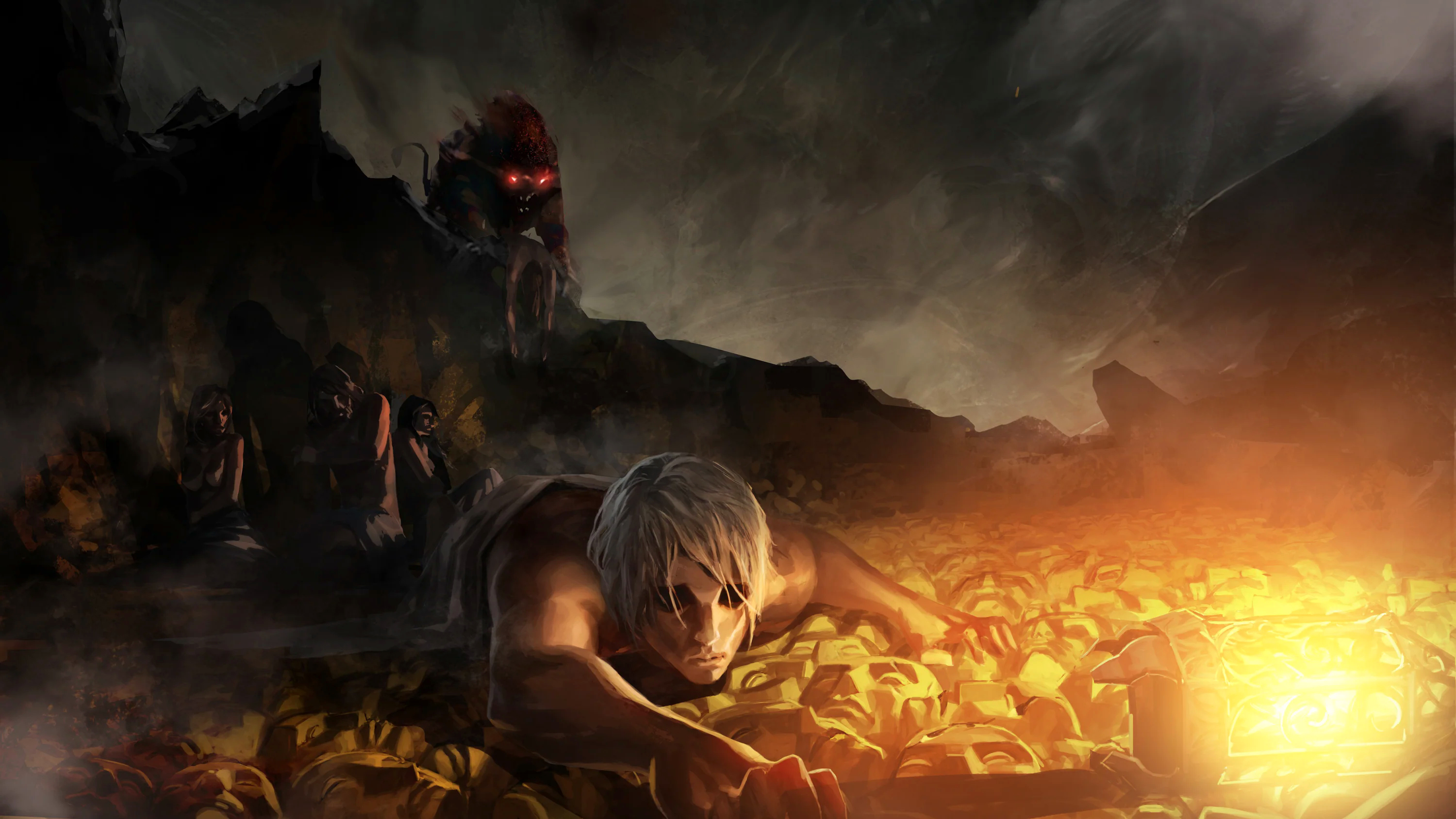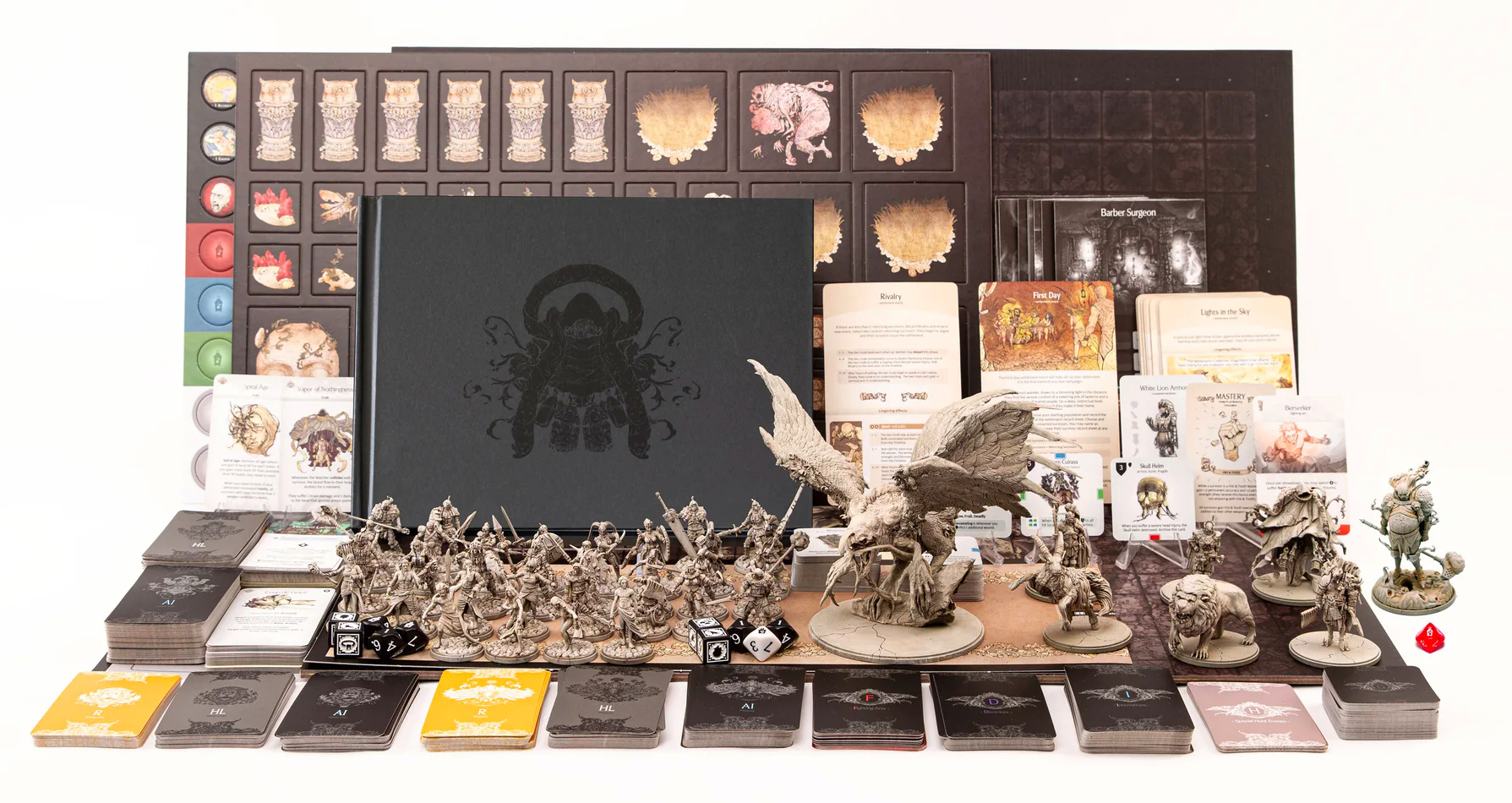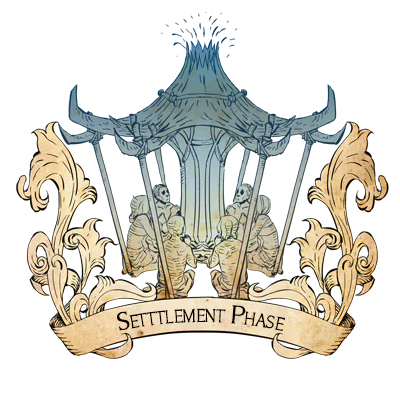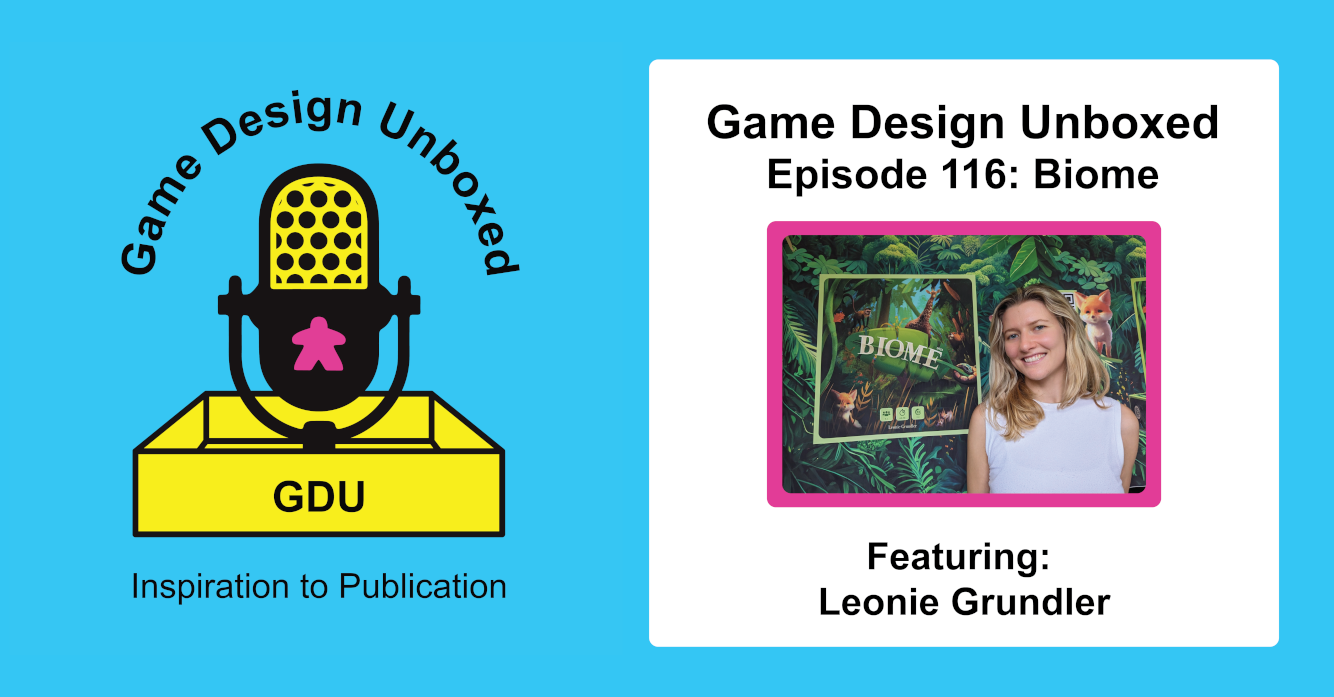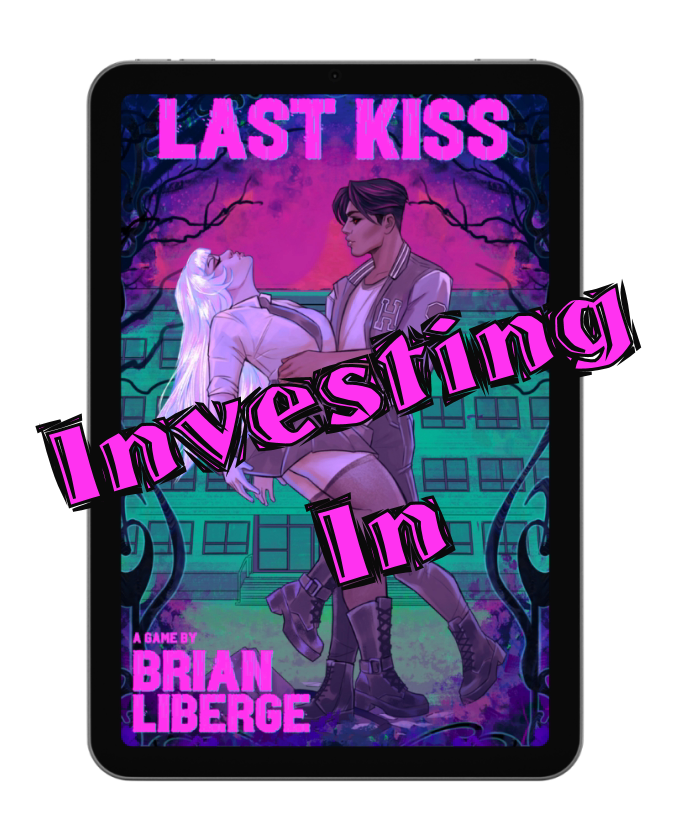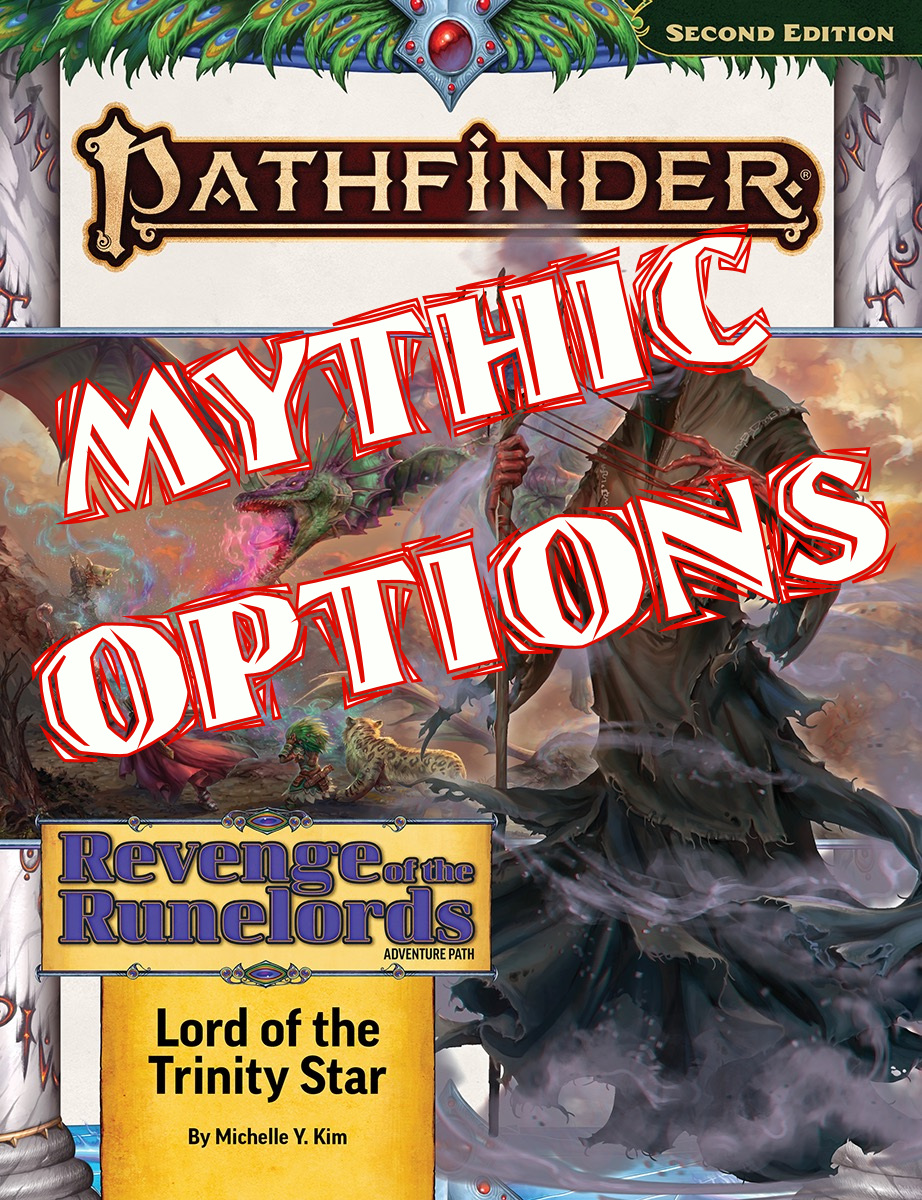“Once upon a time, there was a place of carved stone faces. A man with a lantern lay sleeping a dreamless sleep. The man knew nothing.
One day, the man woke up. He rubbed the dried ink caked over his eyes and opened them. Around him, he saw other people stirring, and beyond, a horizon of unbroken darkness.
A woman approached the man with the lantern. Her soft hand reached out to him. They had no words. They were a mystery to each other.
Suddenly a monster emerged from the darkness, its eyes wild with hunger. It attacked.
The people were no match for the monster. It tore their flesh and crushed their bones between its teeth. Some, it devoured whole.
Overcome with terror and grief, the man with the lantern collapsed to the ground. Cold stone noses pushed into his side. There was no escape.
But the man did not want to die. Desperately grasping the cold stone faces, he felt a crack, and tore at it with all his might. A piece of stone came free. It was sharp and deadly.
The man with the lantern scrambled to his feet, his weapon clenched in his fist. He took a deep breath and roared into the darkness.
Somewhere in the place of stone faces, nameless men and women stand together. They have nothing but a need to survive and a lantern to light their struggle.”1
And that’s literally where you start this game, thrust immediately into a first battle with a not-exactly-a-lion monster. Kingdom Death: Monster (KDM) came out in 2015 but there’ve been numerous expansions, special campaign editions, special miniatures… Honestly I don’t quite understand how I hadn’t heard of this game until one of my best friends purchased a second-hand 1.6 update edition. It’s no small investment, especially as he got some other expansions. He’s quite literally investing in this game, and so when he asked me about trying it, I did a very quick search and immediately said yes. I showed up at my friend Mike’s, we ate a little take out, and then he started reading…
The Prologue
As I said, that narrative above is where you start KDM. The Prologue is grim and I’d say immediately atmospheric introduction that sets the tone for the game’s brutal world. He peppered in the rules as we went along through the prologue, but we were all clearly already feeling the tone. You start with four nameless survivors who awaken in complete darkness, surrounded by an endless expanse of stone faces. With no memory or tools, they are driven by instinct to light a lantern—the game’s central symbol—and soon encounter a terrifying predator known as the White Lion. This initial confrontation is the first experience with combat, fought with only basic weapons like stones and founding stones, and marks the beginning of their struggle for survival. It’s really tempting to throw those stones too as they can cause a critical wound, but then you lose them. Luckily, you can fight with fist and tooth.
The White Lion in the Prologue isn’t even a Level 1 monster, but it is far from an easy fight. It introduces you to the core combat mechanics, including the AI (it’s everyone right?) and Hit Location decks, as well as actions like movement, attacking, and dodging. The fight is brutal and can result in serious injuries or even permanent death right at the beginning. Regardless of the outcome, the survivors return to establish their settlement, naming it and beginning the first lantern year. The Prologue teaches you that even the weakest monsters in this world can be deadly and that every victory is hard-won and costly. It’s meant to be an essential lesson that defines the tone of the campaign ahead. Our group survived, but barely.
The Basics
To break it down this is a cooperative game, a board game really, though with a few boards. There’s no GM or storyteller; heck you could play this alone and control all 4 survivors on your own. It’s certainly dark, and horror-inspired, but there’s a hopeful “light in the darkness” element with Civilization vibes as your survivors, their settlement, and various aspects of civilization for that society grows. There’s a lot of miniatures you assemble, possibly changing over time as they change. The base game is for 4 players but I know it can grow with an expansion or two for up to 6, i.e. the monsters you fight must get really tough. Truly, the combat is challenging and strategy is important.
Some of your survivors will die, and thus having population growth at your settlement so more survivors are available to fight is important. Everyone’s dead? Well that’s game over. Thankfully for the prologue and 1st hunt/battle no one died, but I’ll get to our experience a little later. So yes, horrific and challenging but there’s a need to grow your settlement, deciding on innovations, crafting, hunting and fighting monsters, and of course the characters themselves have growth options including attributes, age, and fighting capabilities. There’s also insanity because this world is rough.
World Overview
KDM starts off in that unknown dark with stone faces all around you. This is a nightmarish world and the only illumination are the lanterns you have. You as a player are taking on the role of one of these waking survivors in the prologue but over time you’ll play another of the population that joins later. I had to after the prologue as my first character had to contemplate the language she invented for our community. None of the characters have memories and the world is devoid of true civilization, so it’s up to what you and the other players make of it. There’s nothing for tracking days or like some calendar but there are “lantern years”, each being one cycle of the game you go through and each cycle/lantern year has 3 phases: the Hunt phase, the Showdown (combat) phase, and the Settlement phase.
Over time these cycles and “lantern years” together form the long-term narrative you’re playing through. Hopefully your strategy, innovations, society, characters, etc. are all developing in order to adapt to stronger enemies. You get resources, sometimes very special resources, from destroying creatures. And in the course of combat you might get some bonuses too, like a character I controlled got a +1 to strength, but in general it’s the work you do at the settlement whether innovating or crafting that helps you long term.
Hunt Phase
The Hunt Phase serves as the prelude to combat, one part narrative and one part strategy. The players together choose a monster to hunt, with difficulty scaling by year and monster level. As survivors move along the hunt track, they encounter a series of random and story-specific events, some of which are tied to the unique traits of the monster being pursued. These events can range from helpful discoveries to devastating injuries or psychological trauma, all contributing to the dark, immersive lore of the game.
Strategic decisions made during the Hunt Phase – such as choosing to engage a tougher monster or following narrative side paths – can have lasting effects on the settlement’s growth and the survivors’ readiness for battle. Monster-specific behaviors, like early ambushes or manipulative encounters, add further complexity. Injuries or mental strain sustained during this phase can hinder the group’s effectiveness in the ensuing Showdown, making the Hunt Phase both a storytelling device and a crucial test of foresight and risk management. We only got one space down the Hunt Phase. We got a chance to gain some courage and roll on a special table for that card and well, we immediately were ambushed by a true Level 1 White Lion!
Showdown Phase
The Showdown Phase is the combat part of gameplay, where survivors engage in tactical, grid-based combat against a formidable monster. It’s partly the most important aspect, but so is the settlement phase, which I’ll get to next. The battlefield includes terrain that affects movement and visibility, adding strategic layers to positioning and approach. Each monster operates using an AI deck that defines its attacks and behavior, with more powerful monsters capable of reshuffling or reacting in unexpected ways, reflecting their escalating threat. Important to see now that there’s no real AI in there. It’s just a deck game and you pull top card for the monster’s activities that round. It really does determine behavior as it might change who it’s targeting too!
Survivors take turns using actions like move, activate, dodge, encourage, and surge. Each has distinct functions and often requires survival points, a limited and precious resource. Attacks are resolved by comparing survivor stats like accuracy and strength to the monster’s evasion and toughness. Once a hit is scored, a card from the Hit Location Deck determines the outcome, with some locations triggering damaging reactions or hidden traps. Combat is dangerous and unforgiving, with even minor mistakes leading to serious injuries or death. However, victory brings valuable rewards: resources from the slain monster and rare materials crucial for crafting advanced gear and unlocking new narrative paths. I won the lion’s glowing mane at one point, though it turned out to just be worth 2 hide. It was still glorious!
Settlement Phase
The Settlement Phase is where the long-term strategy and narrative progression of KDM unfold. After each hunt, you return to their settlement to record the results of the Hunt and Showdown phases: updating survivor sheets with deaths, injuries, and handling milestones that may trigger story events. This phase shifts the focus from immediate survival to broader development, as you use gathered resources to craft gear, construct new buildings, and draw from the Innovation Deck to unlock new technologies and abilities. Beyond crafting and upgrades, this phase introduces rich storytelling through random events, visitor encounters, nemesis battles, and life milestones like births or deaths. You must also manage the growing population, train new survivors, and carry out community endeavors that can aid the group or add risk.
The settlement board acts as a living record of progress, capturing major accomplishments and structural evolution. Strategic planning in this phase is crucial because neglecting innovation or community health can lead to stagnation or even the settlement’s collapse, making this phase essential for long-term success. Technically, we went through a Settlement phase after the prologue. We made some bone daggers, invented language (which got my character some understanding and required her to sit out next Hunt/Showdown phase), and researched Drums. We have music! The hardest part was choosing what all to craft but the bone daggers were good without being frail and some gloves and boots from hide gave us some slight armor.
Character Development
It’s rough at the start for your initial characters, and any new survivors to the population. Only the initial characters get a little equipment, like a cloth wrap and that broken stone face. All begin as extremely vulnerable, unequipped individuals with minimal attributes. Over time, through repeated exposure to hunts, events, and battles, they can grow into powerful veterans provided they survive the many dangers they face. Key attributes like Strength, Accuracy, Evasion, Luck, and Movement can be enhanced through accumulated experience, gear upgrades, random events, and special abilities. Strength adds to your damage roll while accuracy lessens the target number to hit. Evasion helps you dodge monster attacks while Luck decreases the number you need for a critical wound. It’s all d10 based. Starting movement meanwhile is 5 squares and you can’t move diagonally so it adds up.
As survivors develop, they may gain unique Fighting Arts that grant passive bonuses or synergize with certain weapon types, adding depth to combat strategy. Consistent use of a specific weapon also unlocks Weapon Proficiency, allowing survivors to specialize and eventually access powerful techniques or secret masteries. Disorders, while often detrimental, can influence playstyle in thematic ways and sometimes offer surprising advantages. However, death is permanent and frequent. While the loss of a well-developed survivor can be a significant setback, their legacy may live on through innovations they helped unlock, gear they crafted, or descendants they left behind. Exceptional survivors may even become part of the game’s unfolding narrative, unlocking rare content or altering the course of the campaign.
Strong Replayability
KDM is renowned for its depth and difficulty. Choices in innovations, gear, and fight tactics have long-lasting consequences. The game features branching narratives, secret story events, and a variety of monsters and expansions that offer different experiences each campaign. The balance between risk and reward, the emotional impact of survivor death, and the ever-evolving threats create a unique and highly replayable campaign structure.
Numerous expansions add new monsters, storylines, gear, and gameplay mechanics. Some, like the Dragon King or Spidicules, change major systems or introduce new challenges and rewards. The art is amazing and the minis are amazingly terrifying. I’ve discovered the game has a passionate community that shares strategies, homebrew content, and campaign stories. There’s a lot of online resources from wikis, youtube painting tutorials, and player forums too!
Of course you don’t need the expansions to have a great game. I encourage you to spend some time investing in KDM if you get the chance. There is an online simulator, though I’ve heard it’s not as great as playing in person. You’ll try your best to survive and hopefully be able to grow your survivors and their settlement into a thriving community! I also want to wish everyone a Happy PRIDE as we start the best month of the year. Remember the first PRIDE was a riot, and I’m ever so thankful to those who’ve fought for us and all our society. Have fun, celebrate, and if anyone gives you crap, be a White Lion! Much love to all!
Investing In:
I wasn’t quite sure what to name my article series when I first started but the idea of showcasing or discussing things that make me excited, that I find new and interesting, or maybe I’m otherwise passionate about seemed to fit with the idea of Investing In something like the Pathfinder 2E mechanic. To use some magic items you have to give that little bit of yourself, which helps make these things even better. I like the metaphor of the community growing and being strengthened in the same way!
I also want to hear what you’re Investing In! Leave me a comment below about what games, modules, systems, products, people, live streams, etc you enjoy! You can also hit me up on social media as silentinfinity. I want to hear what excites you and what you’re passionate about. There’s so much wonderful content, people, groups (I could go on) in this community of ours that the more we invest in and share, the better it becomes!
Sources
Banner – Kingdom Death Monster rulebook (watcher crest) logo modified, Kingdom Death
- Prologue excerpt, Kingdom Death: Monster rule book, Kingdom Death
- Prologue banner image, Kingdom Death: Monster rule book, Kingdom Death
- Main core box components, Kingdom Death: Monster rule book, Kingdom Death
- Hunt phase crest, Kingdom Death: Monster rule book, Kingdom Death
- Showdown phase crest, Kingdom Death: Monster rule book, Kingdom Death
- Settlement phase crest, Kingdom Death: Monster rule book, Kingdom Death
- White Lion depiction, Kingdom Death: Monster rule book, Kingdom Death


